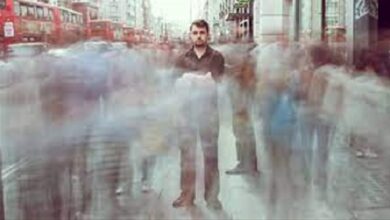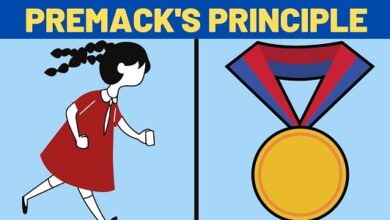What is Creative Visualization with Phases and Techniques
Creative visualization is a process that through our minds and using our imagination, we are able to create what we really want to happen. It could be the achievement of a success or a goal, seeing the end result of our project, etc.
This concept unites two terms: visualization and creativity. Visualizing is seeing in your mind what you want to happen or what you want to achieve. When we visualize the inside, we are taking the first step towards making something happen outside. Creativity refers to the absence of limits, to imagine what we really want without thinking about whether it is possible or not.
doctor Denis Waitley has studied creative visualization and its effects on different groups of people. First, he did this with NASA astronauts and his results were pretty good. He later performed with Olympic athletes replicating the previous results. Studies have determined that our brain is not able to discern between an imaginary situation and a real situation.
To put creative visualization into practice, it is important to start with a state of enthusiasm for the technique and put all our senses into it, because the more real and vivid this visualization is for us, the better results we will obtain.
In addition, it works for anything we want to attract in our lives, whether in the workplace, family or social. The reason is because we ourselves are what we think and sooner or later what we think and visualize will happen in our lives. That is, our thoughts shape our present and project us into the future we really want.
Our mind is so suggestible that, in the same way that we think that something bad is going to happen to us or that we are not going to achieve a certain success, we can train it to obtain positive effects. By thinking positively about what we want to happen, we will attract positive results and experiences into our lives.
phases of Creative visualization
Experimental psychology has tested creative visualization based on the computational theory of images and, for that, has described a series of phases:
1st Step: Generation of images . From creativity or fantasy (or both), we generate a series of mental images.
2nd Step: Image maintenance. It involves intentionally maintaining or preserving mental images. This phase is very important, because if we do not store the images, the following phases would not be possible.
3rd Step: Image Inspection . This phase involves focusing our attention on the image we initially generated. The more detailed we are the analysis, the more information we will receive from it.
4th Step: Image Transformation . This point, after the analysis, consists of modifying the aspects that imply discomfort or some type of stress due to positive aspects.
Techniques of Creative visualization
Author Shakti Gawain, in her book Creative Visualization, proposes a series of meditation exercises and visualization practice. So I show some of them. Remember that you must adapt them to your needs and goals.
To resolve and let the energy flow
This is a simple visualization technique that is especially helpful at the beginning of each meditation. Your goal is to keep the energy flowing and get rid of any blockages.
First, sit in a comfortable posture where you can keep your back straight. It can be on a chair or on the floor with your legs crossed. Close your eyes and breathe slowly and deeply.
When you feel completely relaxed, imagine that you have a very long rope that runs from the base of your spine into the earth and across the floor. This is known as the anchor rope.
So, imagine that the earth energy is going up, through the rope and ends up coursing throughout your body. Continue in this state and explore all the sensations it evokes in you.
To open the energy centers
This meditation is used to heal and purify your body and thus get your energy flowing. It is excellent to do in the morning after waking up, at the beginning of any meditation or whenever we want to relax and clean ourselves.
Lie on your back and keep your arms extended at your sides or with your hands crossed over your torso. Close your eyes, relax and breathe slowly, deeply and smoothly. Imagine that there is a glowing sphere with golden rays above your head.
Breathe slowly and deeply, keeping your attention fixed on the sphere and noticing the radiance in your body from head to toe. Feel the energy expand throughout your body.
Creating Your Sanctuary
One of the first steps to consider in the practice of creative visualization is to create an inner sanctum. This sanctuary is our personal place and where we can retreat whenever we need it.
Make yourself comfortable, close your eyes and relax. Imagine yourself in a beautiful and peaceful natural environment. It can be the way you want it, a real or imagined website. The important thing is that you feel comfortable with it.
Explore this environment, noting every detail. What you see, what you hear, what you feel.
You can do whatever you want to make it the most peaceful place ever. From that moment on, this will be your inner sanctuary, to which you can always return just by closing your eyes and wishing.
Whenever you want, you can add items from your sanctuary or remove things that annoy you or that are not peaceful for you. The important thing is that it is a place where you feel safe.
Meet your guide
Sometimes it can be difficult for us to connect with our higher wisdom. When that happens, we can turn to our inner guide (also known as a counselor, spirit guide, teacher, etc.).
First, close your eyes and relax. Close your eyes and relax deeply. Go to your sanctuary and enjoy a few minutes.
Then imagine that a path opens into your sanctuary and narrows until it is lost in the distance. Start walking through it, and as you go, you begin to feel a clear, bright light. Watch her, is she male or female? How is she? What’s her age? The closer you are to that person, the more details you will be able to perceive.
When you’re next to him, say hello and stop to chat with him. Ask him what you need or what you want to know, walk together and enjoy this moment. You may not like the answers, but don’t be discouraged from trying.
When you are satisfied with that moment, say goodbye to it and exit the meditation exercise. Remember that you can go to your guide when you consider it necessary and necessary, just as you go to your sanctuary.
If you are not satisfied with your guide, as we demonstrated in the previous techniques, introduce the changes you deem necessary. Don’t get frustrated if you don’t get to the first one, the important thing is that you feel comfortable with the result, for that, model it to your liking.
The pink bubble technique
Take a comfortable posture, close your eyes and let your breath flow naturally. See how you feel more and more comfortable. When you are relaxed and calm, imagine something you would like to happen.
Now, imagine that this has already happened. Observe the result and appreciate it, examine it as it is, what emotions and sensations it evokes. The sharper and more detailed you can capture, the better.
When you manage to capture it through all your senses, draw a pink bubble with your mind and watch how your target enters this bubble.
Enjoy this moment of harmony, and when you are ready, imagine how the bubble begins to float and disappears. Do not lose sight of the object that you displayed at the beginning.
The meaning of this meditation is the emotional release of desire and how it floats through the universe, attracting and focusing all our energy to make it come true.
to heal us
This meditation exercise can help us discover the underlying cause of any illness and begin to free ourselves to achieve complete healing.
As in the previous exercises, take a comfortable posture (sitting or lying down) and begin to breathe. Once you are relaxed, start with your toes, putting as much attention as possible on different parts of your body. Send an order to relax and release tension.
See how all tensions in your body dissolve and move away from you. When you have traveled through all parts of your body, imagine that there is a golden light surrounding you and feel it, enjoy the contact with your body and examine the sensations it evokes.
If you have a sore part or are suffering from an illness, ask your body if it wants to tell you something, if it has a message for you, if you need to make changes.
Enjoy the feeling of being relaxed for a few minutes and examine the messages your body sends you, whether they are thoughts, emotions, images, etc. Do everything on your part to understand them. If we don’t notice anything, these messages are likely to arrive later.
Watch how your problems are diluted or how you find the right solutions. Then visualize yourself in an ideal state of health, in different situations, contexts and situations as a complete and radiant person.
Send yourself messages like: “I am loving and healing on all levels: spiritually, mentally, emotionally and physically”, “I am able to meet my needs without getting sick” “I am learning to take care of myself”, “I deserve enjoy good health and feel good. “”I feel free and healthy. I am full of health and energy. ”
The creative visualization notebook
We can write a notebook with what we want to happen (our dreams and fantasies), what we are doing to make it happen, what things inspire us (stories, songs, ideas, feelings, etc.).
There are some notebooks edited by different editors, but we can also make them to our liking. Below we see a series of exercises that we can write in our notebook:
- Our Affirmations What affirmations do you like the most? Which ones motivate them the most to change? We can reserve some pages to write them together or write them as titles of other pages, relating them to other content.
- Ways to flow to others. Make a list of ways you can get your energy flowing to those around you. This list can be general or specific. Also, write down what elements are needed, such as: time, affection, money, friendship, etc.
- List of successes. Make another list of all the situations that were successful throughout your life and analyze what elements were present, which were not, how you reacted, etc.
- Thank you list. This list is for writing down everything we feel grateful for. They can be material goods as well as intangibles.
- Self-Esteem Checklist Take note of all the things you like about yourself, in the physical sphere and your qualities. It’s about feeling good about yourself. The more self-love we cultivate, the greater our successes.
- Personal satisfaction list. Take note of things you can do for yourself that will help you find yourself better. They can be things we can do in our daily lives and also great challenges. Rate them.
- Ready for healing and assistance. Write down people you know who need some kind of support or assistance. Also, they are looking for a cure for something that happens to them. Keep track of the names of statements they might say themselves and think about how you can support them in their situation.
- Fantasies and creative ideas. Write down any ideas, plans, dreams for the future, or creative ideas that come to mind. Unleash your imagination, don’t put obstacles.
This exercise will promote your imagination and creativity.



